Home>Technology>Home Entertainment Systems>What Is 4K Television?
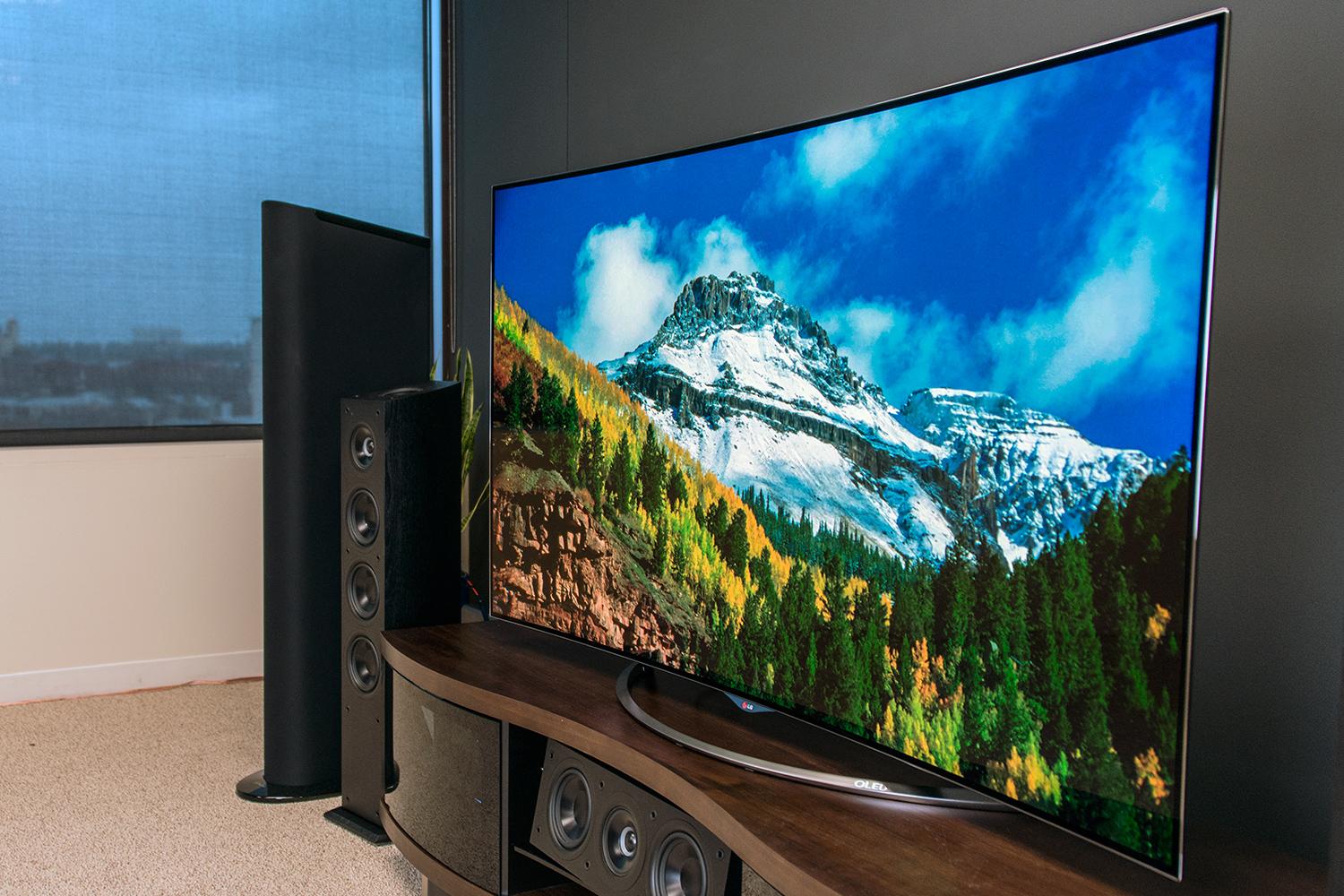

Home Entertainment Systems
What Is 4K Television?
Modified: January 6, 2024
Discover the wonders of 4K television and elevate your home entertainment system to the next level. Immerse yourself in stunning visuals and unparalleled clarity with our range of 4K TVs.
(Many of the links in this article redirect to a specific reviewed product. Your purchase of these products through affiliate links helps to generate commission for Storables.com, at no extra cost. Learn more)
Introduction
The world of home entertainment has come a long way, and one of the latest advancements in television technology is 4K television. With its stunning clarity and lifelike images, 4K television offers an immersive viewing experience that surpasses traditional high-definition (HD) TVs. Whether you’re a movie enthusiast, a sports fanatic, or a gaming aficionado, 4K television has the potential to revolutionize your home entertainment setup.
But what exactly is 4K television? How does it work, and what sets it apart from other TV technologies? In this article, we’ll delve into the world of 4K television, exploring its definition, functionality, benefits, drawbacks, and its future prospects in the ever-evolving realm of home entertainment.
Key Takeaways:
- 4K television offers exceptional picture quality, enhanced color reproduction, and future-proof investment, revolutionizing home entertainment with immersive and lifelike visuals. Embrace the power of 4K technology for an unparalleled viewing experience.
- The future of 4K television promises increased accessibility, an expanding content library, improved display technologies, and integration with emerging tech, paving the way for even more immersive and visually stunning home entertainment experiences. Get ready for the next level of entertainment!
Read also: 9 Amazing 4K Television For 2024
Definition of 4K Television
4K television, also known as Ultra HD or UHD, refers to a display resolution of 3840 x 2160 pixels. The term “4K” is derived from the fact that these TVs have nearly four times the number of pixels as a standard 1080p HD television. This increase in pixel count results in incredibly detailed and sharp images, enhancing the overall viewing experience.
4K television goes beyond just pixel count. It also encompasses other important factors, such as enhanced color reproduction, contrast ratio, and improved motion handling. This combination of higher resolution and improved visual quality creates images that are more true-to-life and immersive.
To fully appreciate the benefits of 4K television, it’s important to understand the concept of pixel density. Pixel density refers to the number of pixels per inch (PPI) on a screen. With 4K TVs, the higher pixel density ensures that individual pixels are virtually indistinguishable to the naked eye, resulting in crisp, smooth visuals, even at close viewing distances.
It’s worth noting that 4K television is not limited to just larger screen sizes. In fact, the increased pixel density of 4K allows for a more immersive viewing experience even on smaller screens, such as computer monitors or smartphones.
Furthermore, it’s important to distinguish between native 4K content and upscaled content. Native 4K content refers to content that was originally produced or recorded in 4K resolution. On the other hand, upscaled content refers to lower-resolution content that has been digitally enhanced to match the 4K resolution. While upscaled content can still benefit from the enhanced clarity of a 4K display, the true potential of 4K TV is fully realized with native 4K content.
How 4K Television Works
4K television works by displaying images with a significantly higher resolution than traditional HD TVs. The increased pixel count provides greater detail, sharper visuals, and a more immersive viewing experience. But how exactly does it achieve this?
At the heart of 4K television technology is the display panel, which consists of millions of tiny pixels. Each pixel is a small, individual element that emits light and contributes to the overall image. In the case of 4K TVs, there are a whopping 8.3 million pixels arranged in a 3840 x 2160 grid.
When you watch content on a 4K TV, each pixel on the screen is assigned a specific color and brightness level. By independently adjusting the colors and brightness of each pixel, 4K TVs can create incredibly detailed and accurate images.
Furthermore, 4K TVs employ advanced image processing technologies to enhance the quality of non-4K content. These technologies, such as upscaling algorithms, analyze lower-resolution content and use complex algorithms to estimate the missing information in order to create a more detailed image. While it may not match the quality of native 4K content, the upscaling process helps to bridge the gap and make non-4K content look better on a 4K display.
In addition to the display panel, 4K TVs often incorporate other technologies to enhance the viewing experience. These may include High Dynamic Range (HDR), which increases the contrast ratio and improves color accuracy, and local dimming, which selectively dims certain parts of the screen to enhance black levels and overall picture quality.
It’s important to note that in order to fully enjoy the benefits of 4K television, you’ll need more than just a compatible TV. Content providers, such as streaming services and cable/satellite providers, must also support 4K resolution. Additionally, using compatible devices like 4K Blu-ray players or streaming devices with 4K capabilities will ensure that you can access and enjoy native 4K content.
Overall, the combination of high-resolution display panels, advanced image processing, and additional technologies makes 4K television a technological marvel that delivers stunning visuals and a truly immersive viewing experience.
Benefits of 4K Television
4K television offers a range of benefits that elevate the viewing experience and set it apart from other TV technologies. Whether you’re a movie enthusiast, sports fan, or avid gamer, here are some key advantages of owning a 4K TV:
1. Exceptional Picture Quality: The most prominent benefit of 4K television is its exceptional picture quality. With four times the number of pixels as a standard HD TV, 4K displays offer stunning clarity and detail. This high resolution allows you to see even the smallest details in your favorite movies, shows, and games, providing a more immersive and lifelike visual experience.
2. Enhanced Color Reproduction: 4K TVs often employ advanced technologies like High Dynamic Range (HDR), which enhances color reproduction and expands the color gamut. HDR enables a wider range of colors, delivering richer and more vibrant hues, making the images on the screen appear more realistic and true-to-life.
3. Improved Contrast Ratio: Another advantage of 4K TVs is the improved contrast ratio, which is the difference between the brightest and darkest parts of an image. With better contrast, 4K televisions can display more accurate and deeper blacks, resulting in improved overall picture quality and a more immersive viewing experience.
4. Upscaling Capabilities: Even if you don’t have access to native 4K content, 4K TVs often come equipped with upscaling technology. This means that lower-resolution content can be digitally enhanced and upscaled to match the 4K resolution. While the quality may not be as exceptional as native 4K content, the upscaling process improves the appearance of non-4K content, making it look sharper and more detailed on the display.
5. Future-Proof Investment: Investing in a 4K TV ensures that you’re prepared for future advancements in content technology. As more movies, TV shows, and streaming platforms adopt 4K resolution, owning a 4K TV allows you to fully enjoy the growing library of native 4K content. Additionally, as technology continues to advance, 4K TVs are likely to offer compatibility with future video and audio formats, ensuring your entertainment system remains up to date.
6. Compatibility with Gaming: Gamers can benefit greatly from 4K television’s high resolution and enhanced visual quality. Many gaming consoles and PCs support 4K gaming, allowing gamers to enjoy their favorite titles with stunning graphics and improved detail. The increased pixel density of 4K displays also enhances the clarity and visibility of in-game elements, providing a competitive edge in fast-paced games.
Overall, the benefits of 4K television encompass superior picture quality, enhanced color reproduction, improved contrast ratio, upscaling capabilities, future-proof investment, and compatibility with gaming. With these advantages, 4K TVs offer a truly immersive and mesmerizing viewing experience.
Drawbacks of 4K Television
While 4K television offers numerous benefits, it’s important to consider some of the potential drawbacks that come with this advanced technology:
1. Higher Cost: One of the main drawbacks of 4K TVs is the higher cost compared to standard HD TVs. The superior technology and components required to deliver 4K resolution contribute to the higher price tag. However, as the technology becomes more widespread, prices have been gradually decreasing, making 4K TVs more affordable over time.
2. Limited Native 4K Content: Although the amount of native 4K content is growing, it is still relatively limited compared to standard HD content. While streaming platforms like Netflix and Amazon Prime Video offer a selection of 4K movies and shows, the majority of content is still in HD. However, as the demand for 4K content increases, the availability is expected to improve.
3. Bandwidth and Streaming Requirements: Streaming native 4K content requires fast internet speeds and a stable connection. 4K video files are significantly larger than HD files, requiring more bandwidth to stream without buffering or quality issues. If your internet connection is not robust enough, you may experience interruptions or downgraded video quality.
4. Upgrading Hardware Requirements: To fully enjoy 4K resolution, you may need to upgrade your existing hardware. This can include purchasing a new 4K Blu-ray player, gaming console, or streaming device that supports 4K output. Additionally, not all HDMI cables are capable of transmitting 4K signals, so you may need to upgrade your cables as well.
5. Sitting Distance: With the increased pixel density of 4K TVs, sitting too far away may diminish the visual impact. To fully appreciate the enhanced detail and clarity, you need to be closer to the screen than you would with a standard HD TV. If you have a large living space and prefer to sit farther away, you may not fully reap the benefits of 4K resolution.
6. Input Lag: Some 4K TVs may suffer from higher input lag, which is the delay between an input signal (such as pressing a button on a game controller) and the corresponding action on the screen. While this can vary depending on the specific model, it’s essential to research and choose a 4K TV with a low input lag for an optimal gaming experience.
Despite these drawbacks, the advantages of 4K television generally outweigh the limitations. As technology advances and content providers continue to adopt 4K resolution, the drawbacks associated with 4K TVs are expected to diminish, making them an even more compelling option for home entertainment.
When purchasing a 4K television, make sure to consider the size of the screen and the distance from which you will be viewing it. A general rule of thumb is that for a 4K TV, the optimal viewing distance is about 1.5 times the diagonal size of the screen.
Read also: 13 Amazing 4K Television 65 Inch For 2024
Comparison with other TV Technologies
4K television has become increasingly popular, but how does it compare to other TV technologies? Let’s take a look at how 4K stacks up against traditional HD TVs and the newer OLED and QLED technologies:
1. Resolution: The most significant difference between 4K and HD TVs is the resolution. 4K TVs have four times the number of pixels as HD TVs, resulting in sharper images and greater detail. HD TVs typically have a resolution of 1920 x 1080 pixels, while 4K TVs have a resolution of 3840 x 2160 pixels.
2. Picture Quality: When it comes to picture quality, 4K TVs offer superior clarity, vibrant colors, and better contrast than HD TVs. The increased pixel count and advancements in image processing technologies make 4K televisions capable of displaying more accurate and lifelike visuals. However, it’s worth noting that high-end HD TVs with advanced display technologies can still deliver impressive picture quality.
3. OLED Technology: OLED (Organic Light-Emitting Diode) TVs utilize organic compounds that emit light when an electrical current is introduced. One of the significant advantages of OLED technology is its ability to achieve perfect black levels and infinite contrast ratio. As each pixel can individually emit light, OLED TVs can produce incredibly deep blacks and exceptional color accuracy. This results in superior picture quality and viewing angles compared to both 4K and HD TVs.
4. QLED Technology: QLED (Quantum-dot Light-Emitting Diode) TVs utilize quantum dots to enhance color accuracy and brightness. Quantum dots are tiny particles that can emit precise colors when exposed to light. QLED TVs offer vibrant colors, high brightness levels, and improved HDR performance. The color reproduction and brightness levels of QLED TVs can rival OLED displays, but they may not achieve the same level of deep blacks and contrast.
5. Content Availability: Another important aspect to consider is the availability of content for each TV technology. HD content is widely available, as it has been the standard for many years. 4K content availability has been steadily growing, with more movies, series, and streaming platforms offering native 4K content. However, native 4K content is more limited than HD content. Both OLED and QLED TVs can display both HD and 4K content, so content availability is not significantly different amongst them.
6. Price: In terms of price, HD TVs are generally the most affordable option, followed by 4K TVs, and then OLED and QLED TVs, which tend to be the most expensive due to their advanced display technologies. It’s essential to note that prices for all technologies have been decreasing over time as newer models are released and technology becomes more accessible.
When comparing 4K TV with other TV technologies, it’s clear that 4K offers a significant step up in picture quality and resolution compared to HD TVs. However, OLED and QLED technologies provide even more impressive picture quality, with OLED offering unmatched black levels and QLED offering vibrant colors and brightness. Making a choice between the technologies will ultimately depend on your budget, viewing preferences, and desired features for your home entertainment setup.
Available 4K Content
As 4K technology continues to gain popularity, the availability of native 4K content has been steadily increasing. There are now various sources where you can access a wide range of movies, TV shows, and other content in stunning 4K resolution. Here are some of the primary platforms and mediums that offer native 4K content:
1. Streaming Services: Popular streaming platforms like Netflix, Amazon Prime Video, and Disney+ have been investing in producing and acquiring native 4K content. These platforms offer a growing library of movies, series, and documentaries in 4K, allowing subscribers to enjoy their favorite content with enhanced picture quality. Some streaming services even have dedicated 4K categories or offer premium subscription tiers for access to 4K content.
2. Media Players and Devices: Many media players and streaming devices, such as Apple TV 4K, Roku Ultra, and Chromecast Ultra, support 4K content streaming. These devices allow you to access various streaming platforms and apps to enjoy native 4K content on your 4K TV.
3. 4K Blu-ray Discs: If you prefer physical media, 4K Blu-ray discs are available for purchase or rental. These discs provide the highest quality and fidelity for watching movies in 4K. They often come with additional features like HDR and Dolby Atmos sound for a more immersive viewing experience. Keep in mind that you will need a 4K Blu-ray player or a gaming console that supports 4K Blu-ray playback.
4. Live Sports and Broadcasts: Some sports events, such as major tournaments and championships, are broadcast in 4K resolution. Sports broadcasting companies have been gradually adopting 4K technology to provide viewers with a more immersive and detailed viewing experience. However, the availability of live sports in 4K may vary depending on your location and the specific event.
5. Video On Demand (VOD): VOD platforms, such as Vudu and Google Play Movies, offer a collection of movies and TV shows available for rental or purchase in 4K. These platforms allow you to rent or buy specific titles in 4K resolution, giving you the flexibility to choose and enjoy the content at your convenience.
6. Documentaries and Nature Programs: Documentaries, especially nature programs, are known for their stunning visuals and breathtaking cinematography. Many nature documentaries are filmed in 4K resolution to capture the finest details of the natural world. Platforms like BBC Earth and National Geographic offer a vast array of 4K documentaries that allow you to explore the wonders of our planet with unparalleled clarity.
It’s important to note that to fully enjoy native 4K content, you’ll need a 4K TV or monitor, along with a compatible streaming device, media player, or Blu-ray player. Additionally, a stable internet connection with sufficient bandwidth is necessary for smooth streaming of 4K content from online platforms.
As the demand for 4K content continues to grow, it is expected that more platforms and content providers will expand their offerings, providing viewers with an even wider selection of native 4K content in the future. With increasing accessibility and availability, 4K content allows you to enjoy a truly immersive and visually stunning home entertainment experience.
Compatible Devices and Accessories
To fully embrace the world of 4K television and make the most of its capabilities, it’s important to have the right compatible devices and accessories. Here are some essential components that can enhance your 4K viewing experience:
1. 4K TV: The centerpiece of your setup is, of course, a 4K television. Ensure that your TV has a native 4K resolution of 3840 x 2160 pixels, as well as the necessary ports, such as HDMI 2.0 or higher, to support 4K content transmission. Look for features like HDR and local dimming to further enhance your viewing experience.
2. 4K Blu-ray Player: If you enjoy physical media, consider investing in a 4K Blu-ray player. These players are specifically designed to handle and play Ultra HD Blu-ray discs, delivering the highest quality video and audio experience available. Look for players that support features like HDR, Dolby Vision, and Dolby Atmos for a truly immersive entertainment experience.
3. Streaming Devices: Various streaming devices, such as Apple TV 4K, Roku Ultra, Amazon Fire TV Stick 4K, and Chromecast Ultra, are compatible with 4K content streaming. These devices connect to your TV and allow you to access streaming platforms and apps that offer native 4K content. Make sure they support popular streaming services and have the necessary ports and connectivity options.
4. High-Speed HDMI Cables: To transmit 4K content from your devices to your TV, you’ll need high-speed HDMI cables. Look for cables that are HDMI 2.0 or higher compliant, as they support the bandwidth required for 4K content transmission at 60 frames per second (fps). It’s important to use premium high-speed cables to ensure a stable and reliable signal transfer.
5. Sound System: A high-quality sound system can greatly enhance your 4K viewing experience. Consider investing in a soundbar or a surround sound system that supports the latest audio formats, such as Dolby Atmos or DTS:X. These audio technologies provide immersive and three-dimensional sound, complementing the stunning visuals of your 4K content.
6. Universal Remote or Smart Home Hub: Controlling multiple devices and navigating through different sources can become cumbersome. Consider using a universal remote or a smart home hub that can streamline the control of your 4K TV, streaming devices, sound system, and other compatible devices. Look for options that offer programmable features and support voice control for added convenience.
7. Gaming Consoles: If you’re a gaming enthusiast, look for gaming consoles that support 4K gaming, such as the PlayStation 5 or Xbox Series X. These consoles deliver high-performance gaming experiences in stunning 4K resolution and often offer additional features like HDR support and faster loading times.
Remember to check the compatibility and specifications of these devices and accessories to ensure they are suitable for your specific 4K TV model and meet your preferences and requirements. With the right combination of compatible devices and accessories, you can elevate your 4K viewing experience to new heights, immersing yourself in stunning visuals and immersive audio.
Future of 4K Television
4K television has already made a significant impact on the home entertainment industry, but its journey is far from over. As technology continues to evolve and consumer demand for higher resolutions and immersive experiences grows, the future of 4K television looks promising. Here are some developments and trends we can expect to see in the future:
1. Increased Adoption and Accessibility: As the prices of 4K TVs continue to decrease, more consumers are likely to adopt this technology. The wider availability and affordability of 4K TVs will drive an increase in the adoption of 4K content, making it more accessible to a broader audience.
2. Expanding Content Library: With the growing popularity of 4K, content creators and providers are investing more in producing native 4K content. We can expect to see a significant expansion in the selection of 4K movies, TV shows, documentaries, and sports events. More streaming platforms and broadcasting companies will offer native 4K content to cater to the demand.
3. Improvement in Display Technologies: Technological advancements will continue to improve the quality and performance of 4K displays. We can expect to see further refinements in areas such as color reproduction, contrast ratio, and viewing angles. Display technologies like MicroLED and mini-LED are also on the horizon, promising even better image quality and more sophisticated local dimming capabilities.
4. Advancements in HDR: High Dynamic Range (HDR) technology has already played a crucial role in enhancing the 4K viewing experience. We can expect to see further advancements in HDR, with improved standards like HDR10+ and Dolby Vision. These advancements will result in better brightness, color accuracy, and contrast, offering more visually stunning and true-to-life images.
5. Growth of 4K Streaming: Streaming platforms are likely to play a significant role in the future of 4K content distribution. As internet speeds continue to improve globally, streaming 4K content will become more seamless and widespread. More content providers will offer 4K streaming options, and the availability of high-speed internet will make it easier for users to access and enjoy native 4K content.
6. Integration with Other Technologies: 4K television will further integrate with emerging technologies, such as virtual reality (VR) and augmented reality (AR). We can expect to see more interactive and immersive experiences that combine 4K visuals with these technologies, opening up new possibilities in gaming, education, and entertainment.
7. The Emergence of 8K Technology: While 4K television is still evolving, 8K technology is emerging on the horizon. 8K displays offer even higher resolution and a more detailed viewing experience. As the demand for higher resolutions grows, we can expect to see 8K displays becoming more mainstream in the future, providing an even more immersive and visually stunning experience.
The future of 4K television is undoubtedly exciting, with advancements in display technology, content availability, streaming capabilities, and integration with other emerging technologies. As these developments continue to unfold, we can look forward to even more immersive, lifelike, and visually stunning home entertainment experiences.
Read more: What Does 4K Support Mean On A Projector
Conclusion
4K television has revolutionized the home entertainment experience, offering viewers an immersive and visually stunning way to enjoy their favorite movies, TV shows, and games. With its exceptional picture quality, enhanced color reproduction, and increased resolution, 4K technology provides a level of detail and clarity that surpasses traditional HD TVs.
Throughout this article, we’ve explored the definition and functionality of 4K television, delving into its benefits, drawbacks, and its comparison to other TV technologies. We’ve discussed the availability of native 4K content and the compatible devices and accessories that can enhance the viewing experience.
As 4K technology continues to evolve, we can anticipate a future marked by increased adoption, an expanding content library, improved display technologies, advancements in HDR, and the growth of 4K streaming. Integration with other technologies like VR and AR, as well as the emergence of 8K displays, will further elevate the possibilities of home entertainment.
While there are still considerations, such as the higher cost, limited native 4K content, and the need for compatible devices and accessories, the benefits of 4K television outweigh the drawbacks. As prices become more accessible and the availability of content expands, 4K television will become even more enticing for consumers.
Ultimately, 4K television has transformed how we experience entertainment in our homes. From breathtaking landscapes to lifelike gaming worlds, the immersive and visually stunning nature of 4K resolution allows us to truly escape into our favorite content. As technology continues to advance, we can look forward to a future where the boundaries of home entertainment are pushed even further, offering us unprecedented experiences and leaving us in awe.
So, if you’re ready to elevate your home entertainment experience, it’s time to consider upgrading to a 4K TV and exploring the vast world of native 4K content. Immerse yourself in stunning visuals, vibrant colors, and breathtaking detail, and get ready to be captivated by the power of 4K technology.
Frequently Asked Questions about What Is 4K Television?
Was this page helpful?
At Storables.com, we guarantee accurate and reliable information. Our content, validated by Expert Board Contributors, is crafted following stringent Editorial Policies. We're committed to providing you with well-researched, expert-backed insights for all your informational needs.

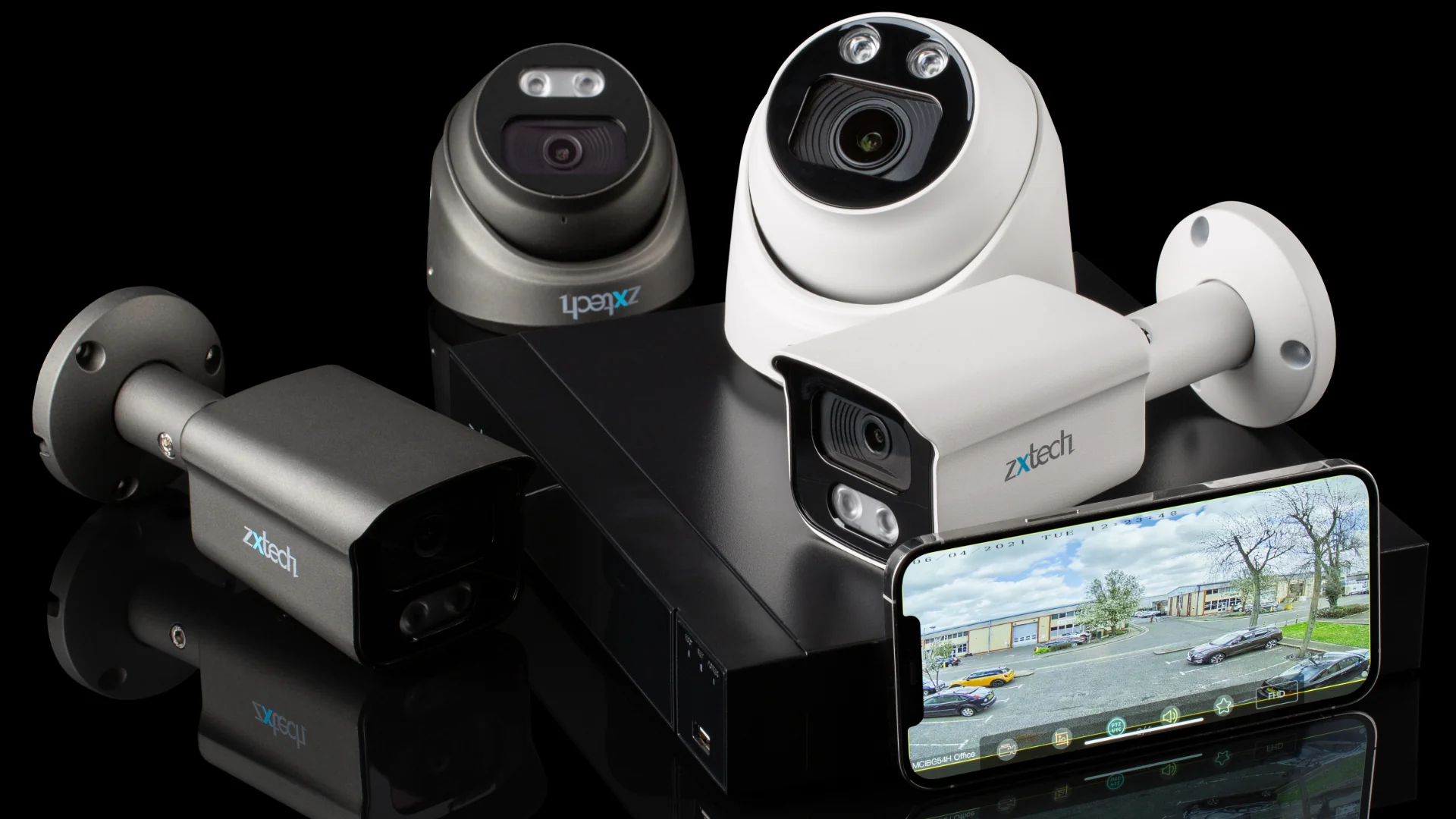
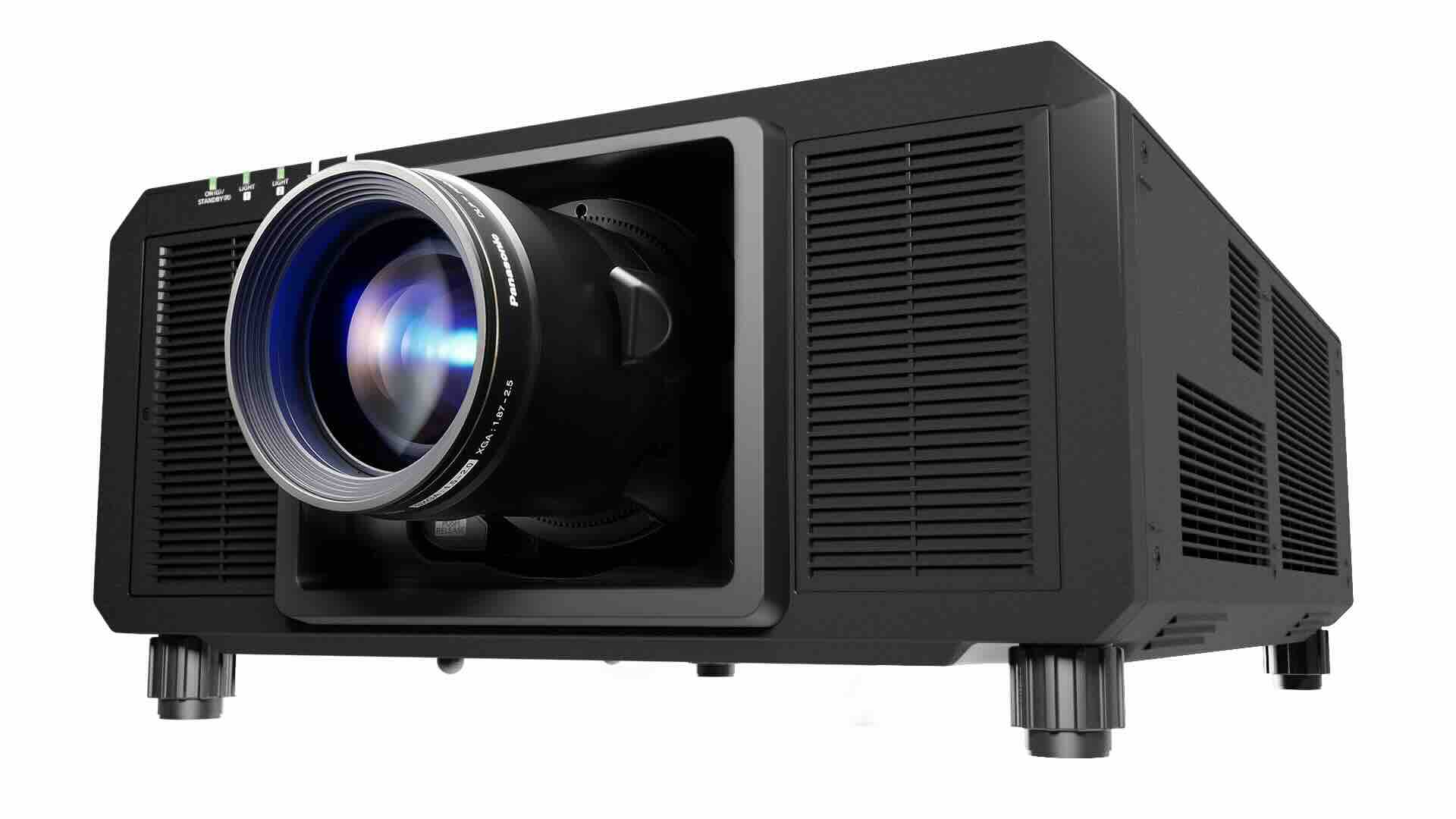
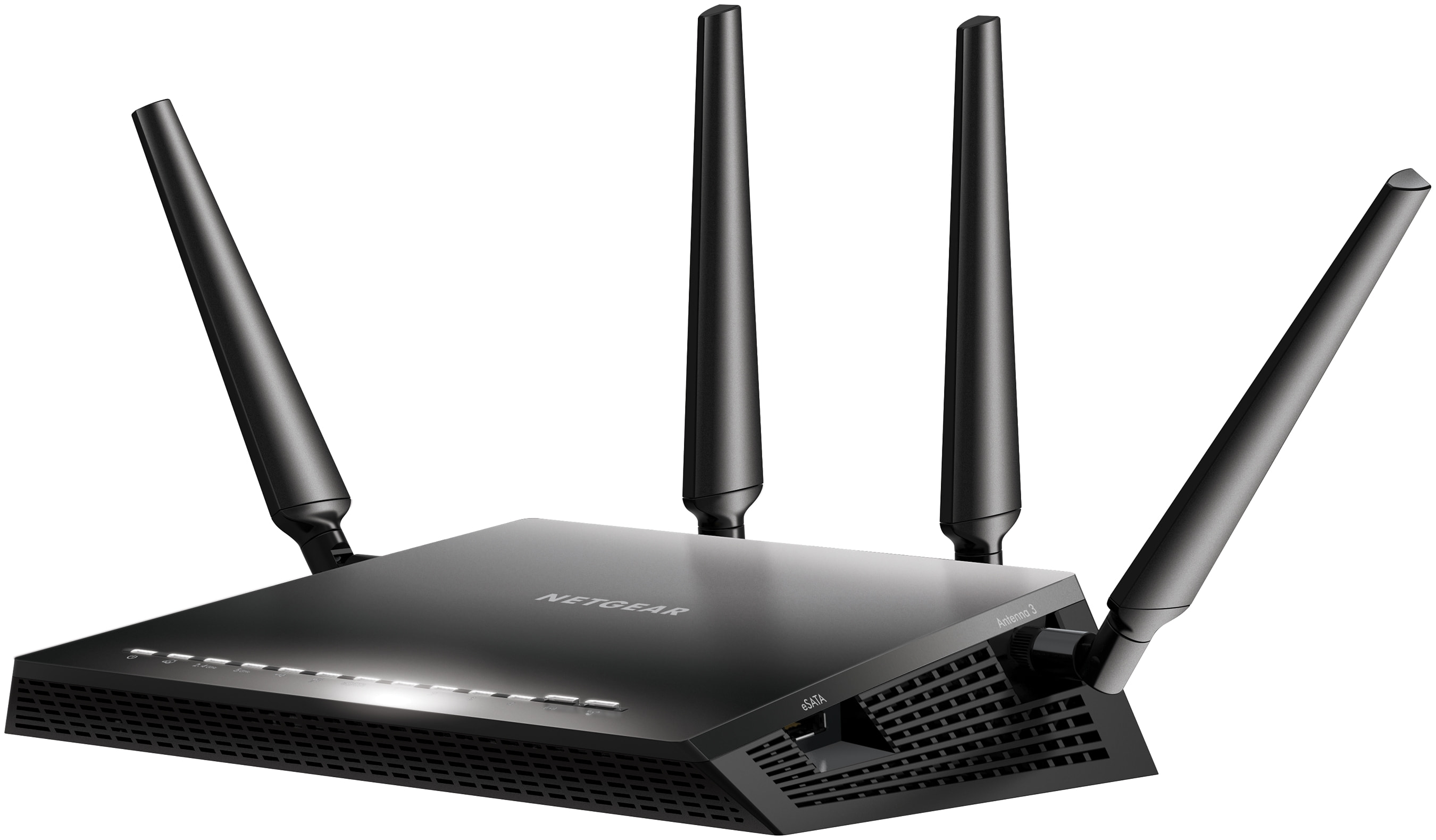
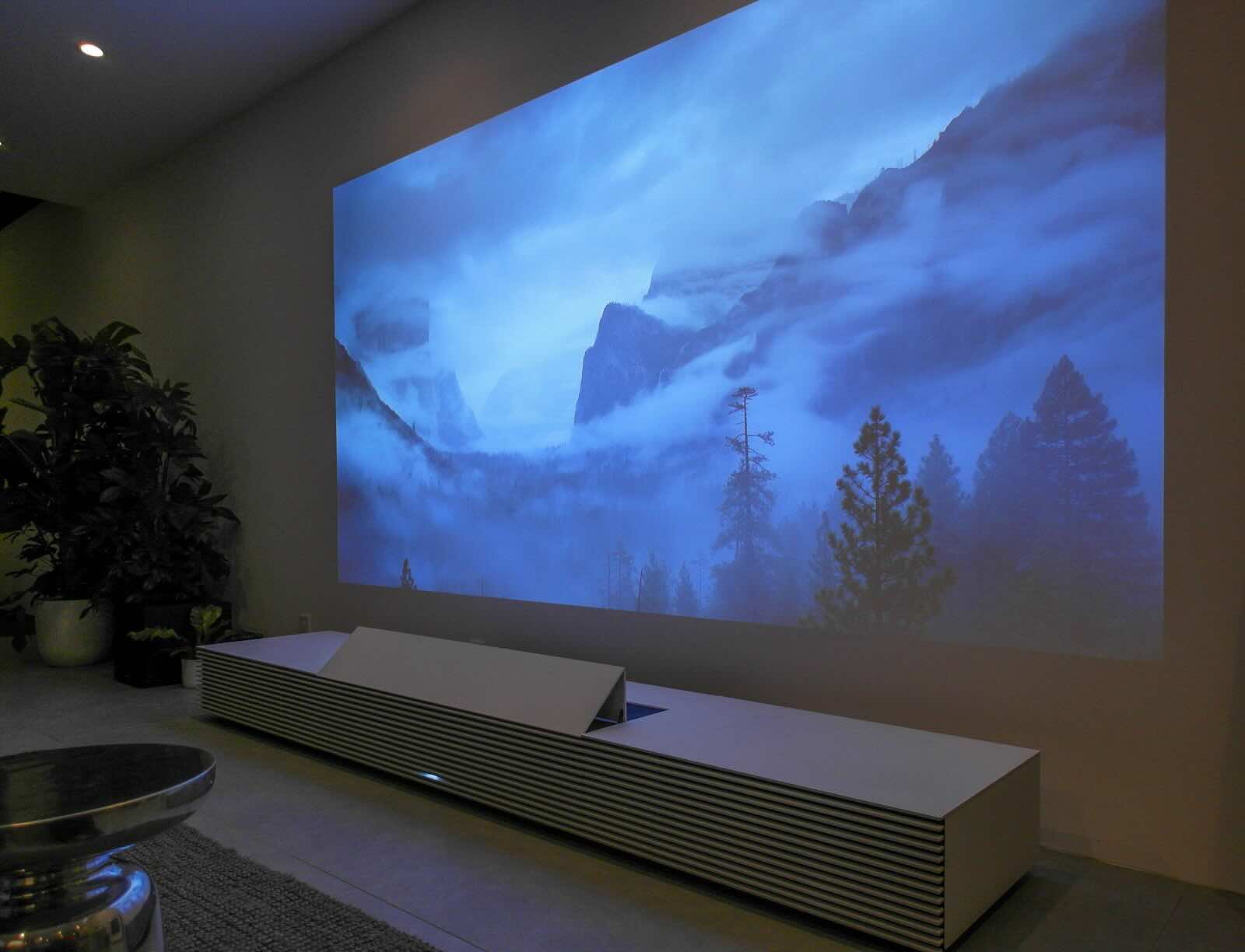


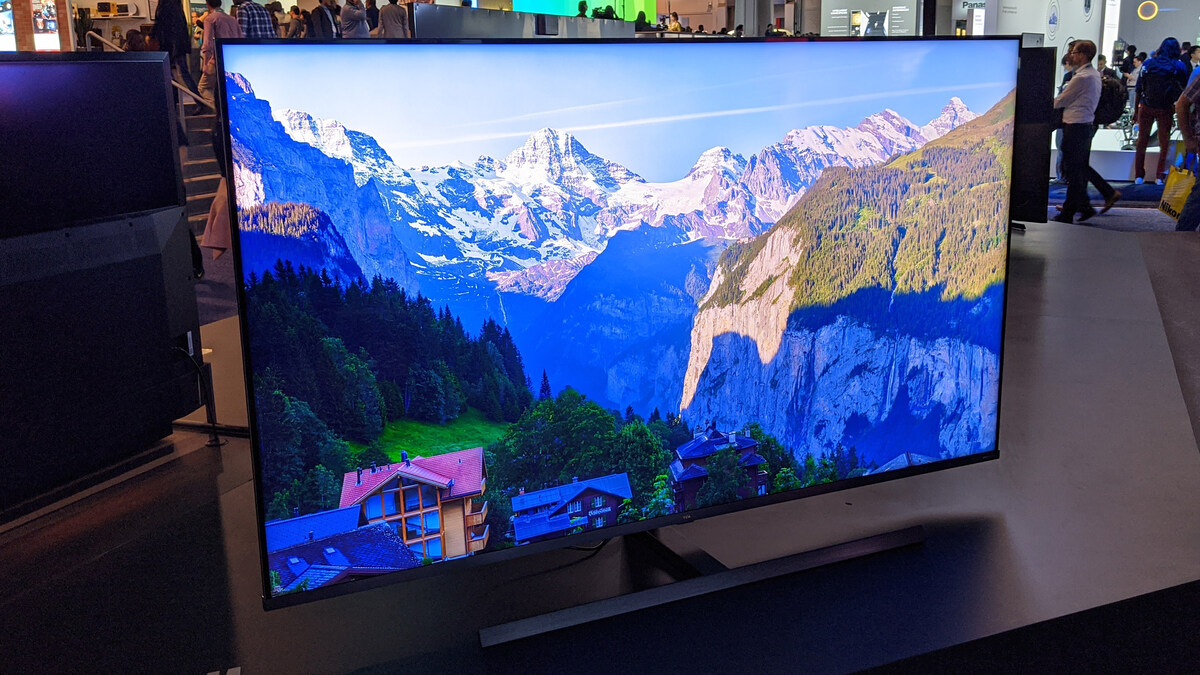
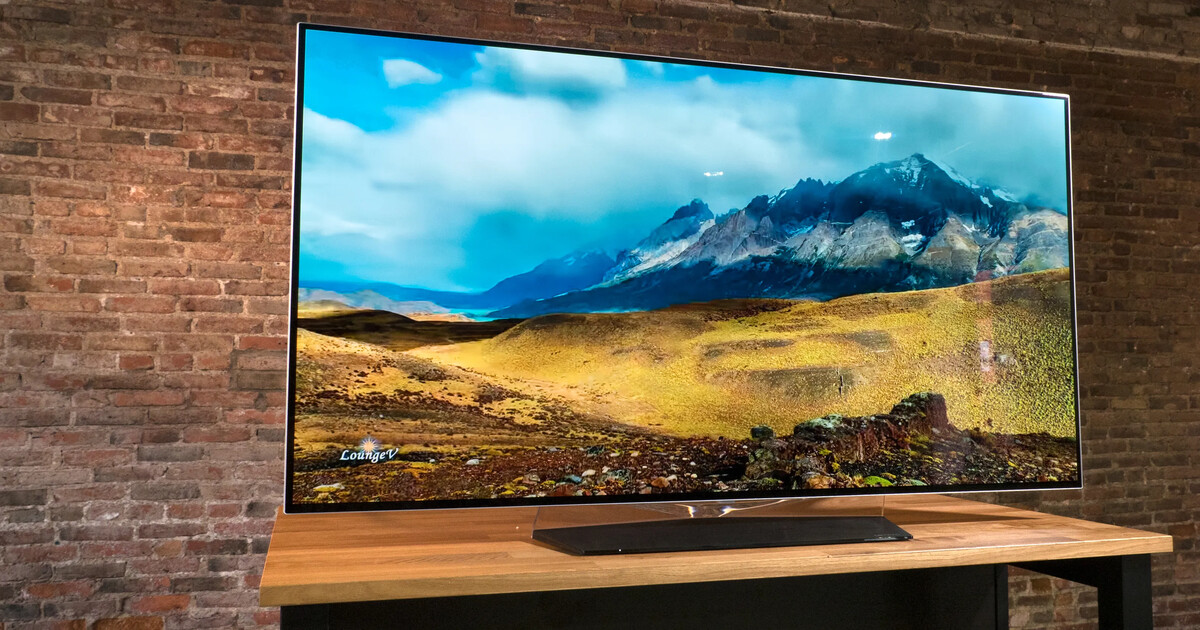





0 thoughts on “What Is 4K Television?”